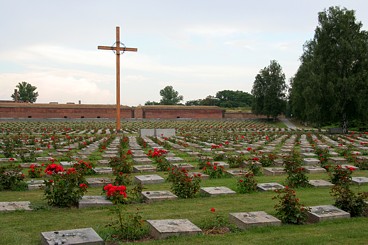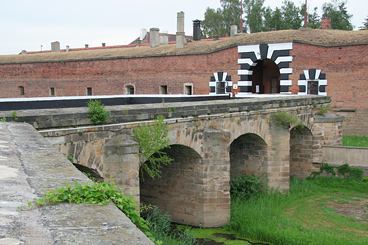 One Sunday afternoon after church, a couple friends and I took an hour-long bus trip to the small town of Terezin. The town was built in the late 18th century by the Hapsburgs to serve as a political prison. In the 20th century the Nazis converted the town into a Jewish ghetto and concentration camp.
One Sunday afternoon after church, a couple friends and I took an hour-long bus trip to the small town of Terezin. The town was built in the late 18th century by the Hapsburgs to serve as a political prison. In the 20th century the Nazis converted the town into a Jewish ghetto and concentration camp.
Terezin (or Theresienstadt as it was called during the war) was a concentration camp, not an extermination camp. Although Jews were executed at Terezin, most were sent east to dedicated extermination camps like Auschwitz. The numbers are stunning. Of the 144,000 Jews interned at Terezin, some 88,000 were sent to extermination camps. Another 33,000 died at Terezin, mostly due to the overcrowding and poor health conditions. At the end of the war only 17,247 prisoners had survived Terezin. Only one in eight prisoners lived.
Because we arrived in Terezin late in the day our time was limited. We started at the Ghetto Museum. The first floor of the museum is full of artwork by children who were held in the camp. The artwork shows the children’s simple interpretations of the prison camp as well as their memories of happier times. Each picture was labeled with the artist’s name and whether or not the artist had survived. Many, of course, did not.
Terezin was one of the more humane concentration camps. Facing rising public concern over Hitler’s treatment of the Jews, the Nazis decided to invite the Red Cross to visit Terezin in 1944. Himmler and Eichmann ordered a massive beautification of the prison camp. The changes were nothing more than window dressing: 7,500 prisoners were shipped to Auschwitz to alleviate overcrowding, facades were built for faux shops, Nazi buildings were falsely labeled as schools, and communal bathing facilities were built but never connected to running water. Concerts and sporting events were staged, and only the healthiest prisoners were featured for the visit. (Many of the prisoners in the propaganda film produced on the occasion were executed in Berkenau shortly thereafter.)
The Nazis succeeded in fooling the observers and scored a public relations victory. The Red Cross report eased international concern about Nazi policies toward the Jews.
After watching a short film about the Red Cross visit to Terezin, we left the museum to see more of the town. We walked through the square and headed to the Small Fortress. Outside the fortress are thousands of tombstones of prisoners who died there. A Star of David and a cross rise above the cemetery. There are a surprising number tombstones dated after May 1945, when the camp was liberated. Many prisoners were in such bad health that they died shortly after gaining their freedom.
Inside the fortress there were no exhibits or signs cluttering the buildings. There were only a handful of people in the fortress. Gray skies and a light rain added to the somber mood. Far from being a tourist trap, it felt like the camp had hardly been touched since the days of the Third Reich. This feeling of authenticity made the history seem more painfully real. Of the eight or so of us in the fortress, two of the men were orthodox Jews.
 Like other concentration camps, a great deal has been written about Terezin by historians, survivors, and family members of victims. My mom borrowed several children’s books about Terezin for me to read. The only one I’ve read so far is Hana’s Suitcase, a touching account of a brother and sister who were separated from their parents and sent to Terezin. They were transferred to different camps and George did not learn his sister’s fate until a chance meeting with one of their friends from Terezin on the streets of Prague after the war had ended. I highly recommend the book. Another well known book, which has also been adapted into a play, is I Never Saw Another Butterfly. The last book I have on Terezin is Fireflies in the Dark.
Like other concentration camps, a great deal has been written about Terezin by historians, survivors, and family members of victims. My mom borrowed several children’s books about Terezin for me to read. The only one I’ve read so far is Hana’s Suitcase, a touching account of a brother and sister who were separated from their parents and sent to Terezin. They were transferred to different camps and George did not learn his sister’s fate until a chance meeting with one of their friends from Terezin on the streets of Prague after the war had ended. I highly recommend the book. Another well known book, which has also been adapted into a play, is I Never Saw Another Butterfly. The last book I have on Terezin is Fireflies in the Dark.

The cemetery outside the Small Fortress.

Entrance to the Small Fortress.

Inside the Small Fortress. The sign mockingly reads Arbeit Macht Frei, “work brings freedom.”

A group cell in the First Courtyard. Gavrilo Princip, the Serb who assassinated Archduke Franz Ferdinand in Sarajevo (setting off WWI), was imprisoned in one of the cells in this block.

Solitary confinement in the First Courtyard.

Inside an abandoned passageway through the fortifications.